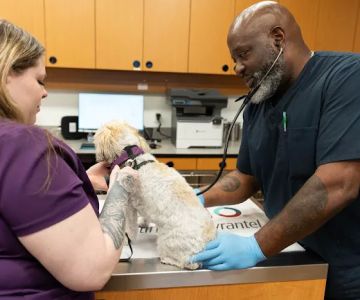Dealing with Territorial Behavior in Pets: How to Manage and Correct It
As a pet owner, dealing with territorial behavior in pets can be one of the more challenging aspects of pet care. I’ve personally encountered this issue with my own pets, and I’ve learned that territorial behavior, whether it’s in the form of guarding spaces, objects, or even people, is a natural instinct. However, when this behavior becomes problematic, it’s crucial to address it to ensure a peaceful home. Here, I’ll share my insights on how to manage and correct territorial behavior in pets, based on both my experiences and research on the topic.
1. Understanding Territorial Behavior in Pets
Before diving into how to handle territorial behavior, it’s essential to first understand why pets act this way. Dogs, in particular, are known for being territorial creatures. It’s an instinctual behavior rooted in their desire to protect their resources. This can include guarding their food, toys, or even certain areas of your home. Cats, too, can exhibit territorial behaviors, such as marking their territory with scent or getting aggressive when they feel their space is being invaded. I found it really helpful to read up on the natural instincts behind this behavior, as it allowed me to approach it with more patience and understanding.
1.1 The Role of Breed in Territorial Behavior
Some pet breeds are more prone to territorial behavior than others. For instance, many guarding breeds, such as the German Shepherd or Rottweiler, can exhibit more protective tendencies. While territorial behavior in these breeds is common, it’s still important to train them properly to ensure they don’t become overly aggressive. Similarly, certain cat breeds, like Siamese or Persian cats, may also demonstrate more territorial behavior. Knowing your pet’s breed can provide insight into their natural tendencies and help you plan an appropriate training strategy.
2. Identifying Territorial Behavior in Pets
In my experience, recognizing the signs of territorial behavior is the first step in correcting it. Territorial pets can display a range of behaviors that signal their discomfort with others in their space. These behaviors can include growling, barking, hissing, or even physical aggression when someone or another animal enters their “territory.” For example, I once had a dog who would aggressively guard the living room couch. Whenever someone would sit there, he would growl and bark incessantly, which was clearly a sign of territorial aggression. Understanding these signals is crucial in managing the behavior effectively.
2.1 Signs of Territorial Aggression in Dogs
For dogs, territorial aggression can manifest in several ways, including barking at strangers, blocking access to certain areas of the house, or even biting. In some cases, the dog might show subtle signs, such as stiffening their body or giving a low growl when someone approaches their “territory.” Paying attention to these signs helped me determine when my pet was getting territorial and allowed me to intervene early on.
2.2 Signs of Territorial Aggression in Cats
Cats, while often more subtle than dogs, can also show signs of territorial aggression. These signs can include scratching furniture, marking with urine, or becoming overly aggressive when another animal or person enters their space. One of my cats used to aggressively swipe at anyone who came too close to the area near her food bowl. Understanding that she was feeling territorial helped me adjust my approach and create boundaries that she could respect.
3. Effective Strategies for Managing Territorial Behavior
Now that we understand why pets exhibit territorial behavior and how to recognize the signs, the next step is finding ways to address the behavior. Through trial and error, I discovered several strategies that worked well for me in managing my pets' territorial tendencies. It’s important to note that patience, consistency, and positive reinforcement are key to successfully managing territorial behavior.
3.1 Providing Personal Space for Your Pet
One of the first steps I took in managing territorial behavior was creating designated spaces for my pets. For my dog, this meant setting up a comfortable bed or crate in a quiet area where he could retreat when he felt the need to guard. Similarly, I designated certain areas of the house for my cats to help them feel safe and in control of their environment. By providing personal space, I noticed that my pets were less inclined to guard spaces aggressively.
3.2 Positive Reinforcement Training
Positive reinforcement has been an essential part of my training process. When my pets displayed non-aggressive behavior, I made sure to reward them with treats or praise. For example, when my dog allowed someone to sit on the couch without growling, I immediately rewarded him. This reinforced the idea that calm behavior leads to positive outcomes. I found that over time, this approach helped reduce territorial behavior in both my dog and my cats.
4. Seeking Professional Help
While I was able to make some progress on my own, I eventually realized that certain behavioral issues required professional assistance. I reached out to a certified dog trainer who specialized in behavioral issues, including territorial aggression. For pets with more severe territorial behavior, working with a professional can provide tailored advice and effective training techniques that go beyond what I could implement alone. If you’re struggling with territorial behavior in your pets, I recommend considering professional help, as they can assess the situation and offer a comprehensive plan for correction.
4.1 Behavior Modification Programs
Many professional trainers offer behavior modification programs that specifically address territorial behavior. These programs often focus on helping pets learn new behaviors, gradually exposing them to the situations that trigger their territorial aggression in a controlled environment. I found that this gradual approach was effective for reducing my pets’ territorial tendencies, particularly in situations where they were guarding certain areas of the house.
5. Prevention Tips for Future Territorial Issues
In my experience, prevention is just as important as correction when it comes to managing territorial behavior. After addressing the behavior in my pets, I focused on preventing future issues by being proactive. This included setting clear boundaries, maintaining consistent routines, and continuing to reinforce positive behavior. Additionally, I made sure to expose my pets to new people and animals in a positive, controlled manner to prevent territorial instincts from becoming entrenched.
5.1 Socialization for Puppies and Kittens
For new puppies and kittens, early socialization is crucial. The more positive interactions they have with other pets and people, the less likely they are to develop territorial behavior later on. I made sure to expose my pets to various environments, people, and animals during their formative months, which helped them become well-adjusted and less prone to territorial aggression.











